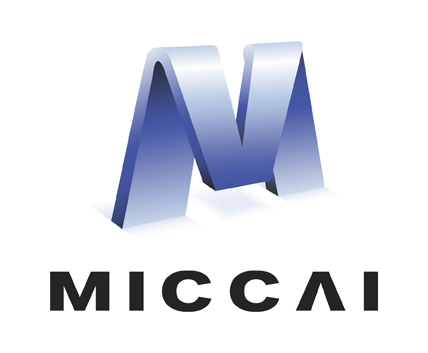Abstract
Machine learning, especially deep learning, has achieved state-of-the-art performance on various computer vision tasks. For computer vision tasks in the medical domain, it remains as challenging tasks since medical data is heterogeneous, multi-level, and multi-scale. Head and Neck Tumor Segmentation Challenge (HECKTOR) provides a platform to apply machine learning techniques to the medical image domain. HECKTOR 2022 provides positron emission tomography/computed tomography (PET/CT) images which includes useful metabolic and anatomical information to sufficiently make an accurate tumor segmentation. In this paper, we proposed a stacked-multi-scaled medical image segmentation framework to automatically segment the Head and Neck tumor using PET/CT images. The main idea of our network was to generate various low-resolution feature maps of PET/CT images to make a better contour of Head and Neck tumors. We used multi-scaled PET/CT images as inputs, and stacked different intermediate feature maps by resolution for a better inference result. In addition, we evaluated our model on the HECKTOR challenge test dataset. Overall, we achieved a 0.69786, 0.66730 mean Dice score on GTVp and GTVn respectively. Our team’s name is HPCAS.
Access this chapter
Tax calculation will be finalised at checkout
Purchases are for personal use only
Similar content being viewed by others
References
Andrearczyk, V., et al.: Overview of the HECKTOR challenge at MICCAI 2021: automatic head and neck tumor segmentation and outcome prediction in PET/CT images. In: Andrearczyk, V., Oreiller, V., Hatt, M., Depeursinge, A. (eds.) HECKTOR 2021. LNCS, vol. 13209, pp. 1–37. Springer, Cham (2022). https://doi.org/10.1007/978-3-030-98253-9_1
Beare, R., Lowekamp, B., Yaniv, Z.: Image segmentation, registration and characterization in R with SimpleITK. J. Stat. Softw. 86 (2018)
Cancer Research UK: Survival for laryngeal cancer (2020). https://www.cancerresearchuk.org/about-cancer/laryngeal-cancer/survival
caner.net: Head and neck cancer: Statistics (2020). https://www.cancer.net/cancer-types/head-and-neck-cancer/statistics
Farag, A.A.: Edge-based image segmentation. Remote Sens. Rev. 6(1), 95–121 (1992)
Huang, G., Liu, Z., Van Der Maaten, L., Weinberger, K.Q.: Densely connected convolutional networks. In: Proceedings of the IEEE Conference on Computer Vision and Pattern Recognition, pp. 4700–4708 (2017)
Isensee, F., Jäger, P.F., Full, P.M., Vollmuth, P., Maier-Hein, K.H.: nnU-Net for brain tumor segmentation. In: Crimi, A., Bakas, S. (eds.) BrainLes 2020. LNCS, vol. 12659, pp. 118–132. Springer, Cham (2021). https://doi.org/10.1007/978-3-030-72087-2_11
Kamnitsas, K., et al.: Ensembles of multiple models and architectures for robust brain tumour segmentation. In: Crimi, A., Bakas, S., Kuijf, H., Menze, B., Reyes, M. (eds.) BrainLes 2017. LNCS, vol. 10670, pp. 450–462. Springer, Cham (2018). https://doi.org/10.1007/978-3-319-75238-9_38
Kamnitsas, K., et al.: DeepMedic for brain tumor segmentation. In: Crimi, A., Menze, B., Maier, O., Reyes, M., Winzeck, S., Handels, H. (eds.) BrainLes 2016. LNCS, vol. 10154, pp. 138–149. Springer, Cham (2016). https://doi.org/10.1007/978-3-319-55524-9_14
Leung, T., Malik, J.: Contour continuity in region based image segmentation. In: Burkhardt, H., Neumann, B. (eds.) ECCV 1998. LNCS, vol. 1406, pp. 544–559. Springer, Heidelberg (1998). https://doi.org/10.1007/BFb0055689
Long, J., Shelhamer, E., Darrell, T.: Fully convolutional networks for semantic segmentation. In: Proceedings of the IEEE Conference on Computer Vision and Pattern Recognition, pp. 3431–3440 (2015)
Milletari, F., Navab, N., Ahmadi, S.A.: V-Net: fully convolutional neural networks for volumetric medical image segmentation. In: 2016 Fourth International Conference on 3D Vision (3DV), pp. 565–571. IEEE (2016)
Oreiller, V., et al.: Head and neck tumor segmentation in PET/CT: the HECKTOR challenge. Med. Image Anal. 77, 102336 (2022)
Ronneberger, O., Fischer, P., Brox, T.: U-Net: convolutional networks for biomedical image segmentation. In: Navab, N., Hornegger, J., Wells, W.M., Frangi, A.F. (eds.) MICCAI 2015. LNCS, vol. 9351, pp. 234–241. Springer, Cham (2015). https://doi.org/10.1007/978-3-319-24574-4_28
Shi, Y., Micklisch, C., Mushtaq, E., Avestimehr, S., Yan, Y., Zhang, X.: An ensemble approach to automatic brain tumor segmentation. In: Crimi, A., Bakas, S. (eds.) BrainLes 2021. LNCS, vol. 12963, pp. 138–148. Springer, Cham (2022). https://doi.org/10.1007/978-3-031-09002-8_13
Wang, G., Li, W., Ourselin, S., Vercauteren, T.: Automatic brain tumor segmentation using cascaded anisotropic convolutional neural networks. In: Crimi, A., Bakas, S., Kuijf, H., Menze, B., Reyes, M. (eds.) BrainLes 2017. LNCS, vol. 10670, pp. 178–190. Springer, Cham (2018). https://doi.org/10.1007/978-3-319-75238-9_16
Wang, W., Chen, C., Ding, M., Li, J., Yu, H., Zha, S.: TransBTS: multimodal brain tumor segmentation using transformer. arXiv preprint arXiv:2103.04430 (2021)
Yanowitz, S.D., Bruckstein, A.M.: A new method for image segmentation. Comput. Vis. Graph. Image Process. 46(1), 82–95 (1989)
Zhang, Z., Liu, Q., Wang, Y.: Road extraction by deep residual U-Net. IEEE Geosci. Remote Sens. Lett. 15(5), 749–753 (2018)
Acknowledgment
We acknowledge support from National Science Foundation under the Grant 2015254, from the University of Texas at Anderson Cancer Center, Texas Advanced Computing Center, and Oden Institute for Computational and Engineering Sciences initiative in Oncological Data and Computational Science.
Author information
Authors and Affiliations
Corresponding author
Editor information
Editors and Affiliations
Rights and permissions
Copyright information
© 2023 The Author(s), under exclusive license to Springer Nature Switzerland AG
About this paper
Cite this paper
Shi, Y., Zhang, X., Yan, Y. (2023). Stacking Feature Maps of Multi-scaled Medical Images in U-Net for 3D Head and Neck Tumor Segmentation. In: Andrearczyk, V., Oreiller, V., Hatt, M., Depeursinge, A. (eds) Head and Neck Tumor Segmentation and Outcome Prediction. HECKTOR 2022. Lecture Notes in Computer Science, vol 13626. Springer, Cham. https://doi.org/10.1007/978-3-031-27420-6_8
Download citation
DOI: https://doi.org/10.1007/978-3-031-27420-6_8
Published:
Publisher Name: Springer, Cham
Print ISBN: 978-3-031-27419-0
Online ISBN: 978-3-031-27420-6
eBook Packages: Computer ScienceComputer Science (R0)




